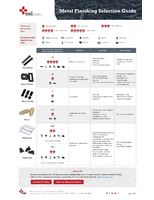Whitford's Xylan® Helps Generate Electricity
The winds and seas that dominate the 70 islands that make up the Orkneys has shaped the life of those who live there as well as the islands themselves - which is evident from the lack of trees and crops.
The Orkney Islands are part of an archipelago of 70 islands 16 kilometers off the coast of northern Scotland.
Despite being on the outer fringes of the British Isles, these islands are producing cutting-edge wave and tidal technology, demonstrating innovation that's putting the UK on the map as a global leader, and regenerating island communities by bringing new jobs, new skills and creating a strong supply chain.
If Scotland is the envy of Europe when it comes to renewable energy, then Orkney is the envy of Scotland.
Orkney-based companies and the European Marine Energy Centre (EMEC) are celebrated for their work in the wave and tidal sector. EMEC is the first of its kind to offer developers the opportunity to test full-scale prototypes in the sea.
"Throw the switch!"
On Thursday, 11 August 2011, Atlantis Resources successfully connected its 1 megawatt AR1000 tidal turbine to the United Kingdom's National Grid at the European Maritime Energy Centre's test site in the Orkney Islands.
The AR1000 becomes Scotland's first grid-connected, commercial- scale tidal turbine, marking a crucial milestone in the development of the marine energy industry.
Installed at a depth of about 50 meters, and operating in a maximum tidal flow of almost 4 meters per second (equivalent to 7.8 knots), the AR1000 builds on the success of its predecessor, the AK1000.
Tidal turbines work like an underwater wind turbine. Instead of air, the tides' ebb and flow force the blades to spin, which rotate the turbine which in turn powers an electrical generator.
The AK1000 specified Xylan, which was used in the connecting flange between the power nacelle and its mounting assembly.
The newer AR1000 tidal turbine uses Xylan 1424, this time on the heavy M30 bolts and washers that retain the hatch covers. Xylan 1424 was chosen in preference to painting with a high-build marine system since Xylan permits the easy removal and refitting of the coated metal parts as it provides excellent resistance to the severe corrosive atmosphere to which the parts are constantly exposed.
All the bolts and washers used were supplied and coated by a member of Whitford's Quality Approved Coater program, which is restricted to applicators who have the right equipment, have solid experience in the application of Whitford coatings, and whose quality control meets Whitford's rigorous standards.
For complete details of this remarkable story, please visit the Atlantis Resources website at atlantisresourcescorporation.com.




